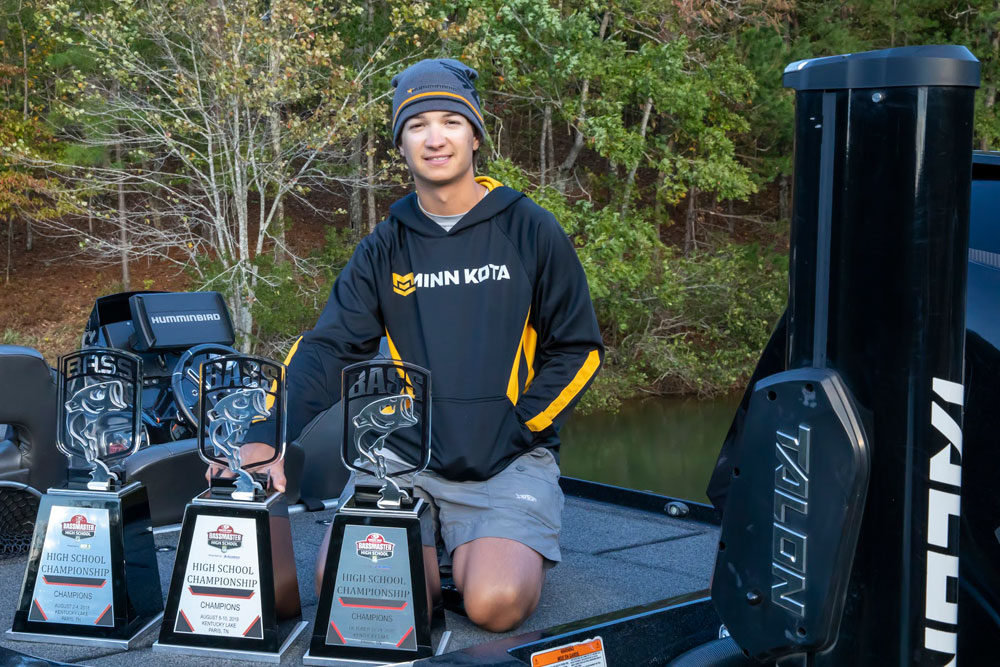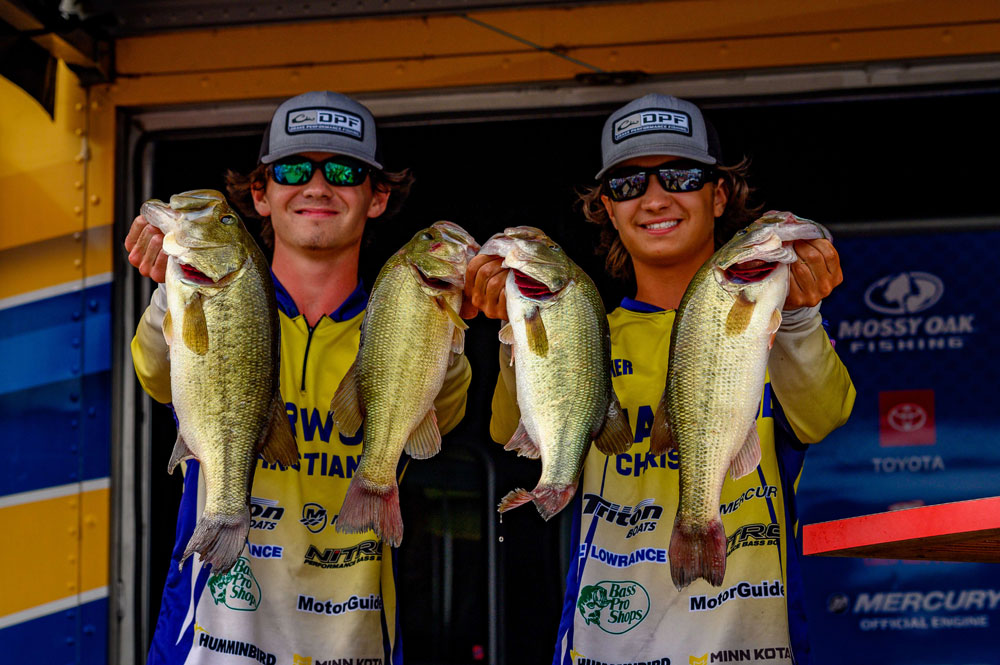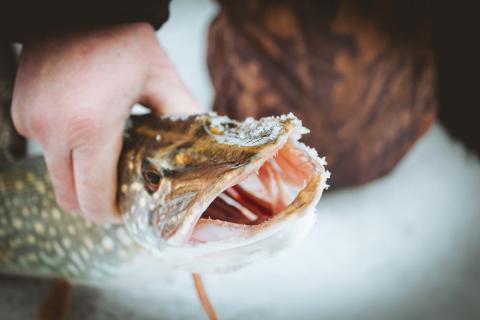provided by John E. Phillips
At the 2020 Mossy Oak Fishing Bassmaster High School Championship, Tucker Smith won his third National Championship with two different partners from Briarwood High School in Birmingham Alabama. Each of these three championships had from 200-300, two-man high-school teams participating in it. In 2020, Smith fished with Hayden Marbut, and the team brought in 47 pounds and 5 ounces of bass. The tournament was held on Kentucky Lake.

I won my first National Championship title when I was 16 years old and a sophomore in high school in 2018. In that tournament, my partner was Grayson Morris, my longtime fishing buddy. The following year, Grayson and I won the Mossy Oak Fishing Bassmaster High School Championship in August, 2019, on Kentucky Lake. Then at the 2020 National Championship on Kentucky Lake held in October, I won as a team with my friend Hayden Marbut, also of Briarwood High. But the October tournament was completely different from the other Championships and required us to fish in different places and with different lures to find bass. I can’t say enough about how all the high school bass fishing teams really appreciate Mossy Oak’s support.
If you step back and look at what has caused you to be able to win three National Championships in back-to-back years, what elements have come together to make you and your partners so successful?
The support of our families and school have been a major element for us even having the opportunity to win. Also, the experience on the water that we’ve had on Kentucky Lake for three consecutive years has played a major role. For the past two championships, my partner Hayden Marbut and I went up before the cut-off time and practiced for a full week from sunup to sundown, learning the lake and putting time in on the water to get ready to fish the National Championship. However, this year we only had time to put in two days of pre-practice before the start of the tournament. All of the conditions had changed from the conditions that we’d fished under when we won the tournament last year in August.
How do you get out of school for a week to practice a week before the cut-off time on Kentucky Lake?
Currently, I’m attending school at Auburn University, and all of my classes are online due to COVID-19. So, I can do my homework and my schoolwork anywhere I am, as long as I have Wi-Fi.
Since you’ve won all of your three National Bass Championships on Kentucky Lake, what has been the magic on that lake that’s enabled you and your partners to win?

Kentucky Lake is set up the way my partners and I like to fish. For the first two tournaments, we fished in shallow water and around bushes and other structures, which is how we fish at home on Alabama’s Coosa River. So, the first two National Championships we were able to fish to our strengths and fish the way that we fish when we go fishing for fun at home. This year was somewhat different from how we’d fished in the past, and we actually had to fish Kentucky Lake completely differently than we had fished it in the past. To be honest, we weren’t completely comfortable having to change tactics.
But finally we figured out that we needed to fish main river flats and bars with top-water lures. We had fished top-water lures before at home, but we’d never considered that style of fishing one of our strengths. We were super blessed to finally figure out what the bass were doing and how to catch them, because we didn’t get to use the game plan we’d set up to fish. Even when we felt like we knew how to catch the bass fishing with top-water lures on points and bars in October, the weather changed, and we started getting a lot of wave action on the points and bars.
Then we had to switch and use lipless crankbaits and other underwater lures, since the waves were too high to fish top-water lures successfully. We knew we were in trouble on the second day when the waves got so high that the bass wouldn’t come up and take our top-water lures like they had all day on the first day of the tournament. We remembered that largemouth and smallmouth bass like lipless crankbaits, like Strike King’s Red Eyed Shad and a Bill Lewis Rat-L-Trap, both in shad colors. Because the wind was high, lipless crankbaits were much easier to cast accurately than top-water lures would be. The lipless crankbaits cut through the wind and weren’t blown off target like top-water lures would be.
What type of top-water lures did you fish this year?
I fished a Whopper Plopper, a Heddon Zara Spook, and a Livingston Lures Walking Boss Spook. We were fishing bone-colored top-water walking baits.
Historically, Kentucky Lake has been a ledge fishing lake. Why did you fish the shallow bars instead of fishing the ledges?
Kentucky Lake had a big infestation of carp, and the carp fed on the zooplankton that the shad ate, so the shad had moved to other places. The bass followed them. We had done a lot of research on the internet about Kentucky Lake and had learned that the bass on Kentucky Lake in October usually moved in shallow and attacked top-water lures. When we had to abandon our original game plan of fishing bushes, we went out on the main lake, took our top-water lures and fished miles and miles of shoreline and flats, until we got a bite. Then we’d mark that spot as a waypoint on our Humminbird HELIX 12 depth finders. Since we learned that when we got one bite, we usually could get several more in that same spot, we set-up milk runs to fish only the places where we’d gotten bites or caught fish in the tournament.
What feature on your depth finder helped you the most in this tournament?
The mapping feature was the most useful because the places we were fishing in were so shallow that they wouldn’t record on our depth finder. When we dropped a pin on a spot, that pin represented where our boat should be to fish the shallow water out from the boat. The bass were holding in water as shallow as 1-2 feet deep and might follow our lures out to 5-6 feet deep. Or, they would come up from 5-6 feet to take our baits. That’s the reason that the LakeMaster lake maps feature, on our Humminbird depth finder, was the most important of our electronics.






























